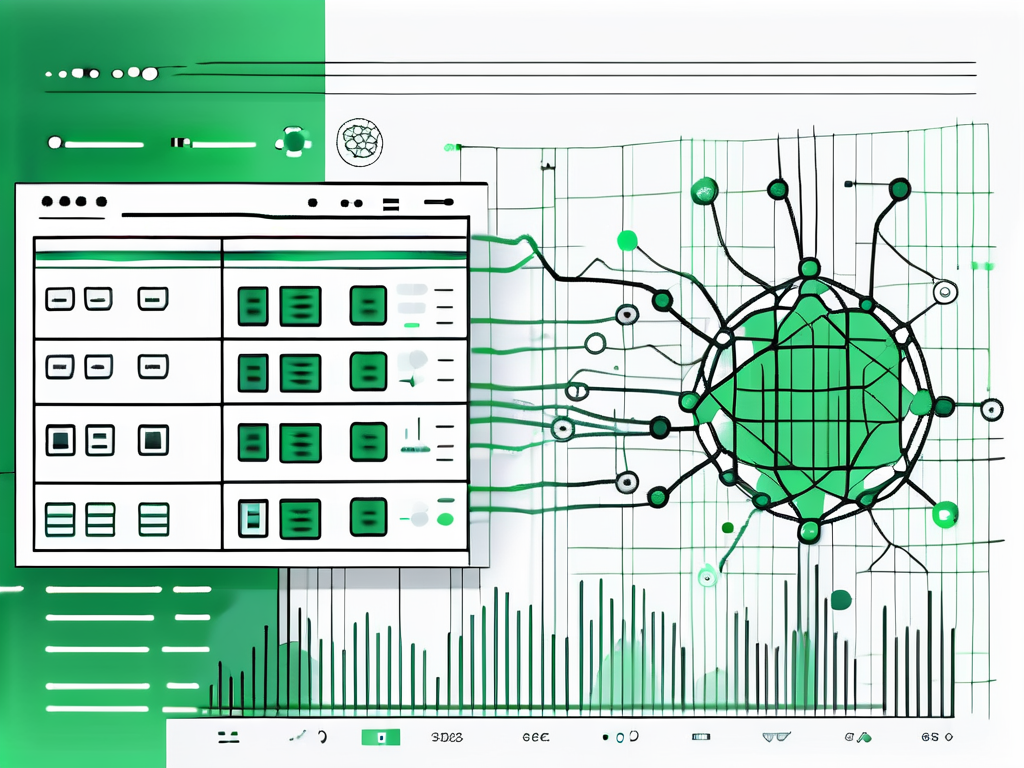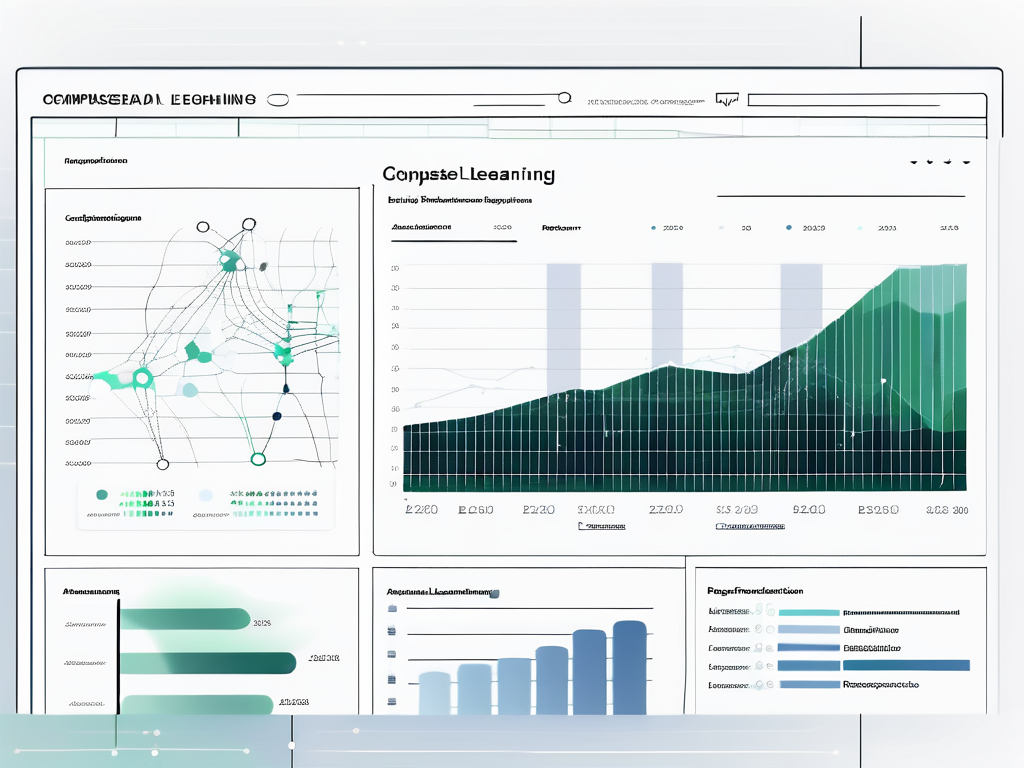Table of Contents
Artificial intelligence (AI) has revolutionized various industries, and spreadsheets are no exception. AI technology has made its way into the world of spreadsheets, offering users new and powerful capabilities. In this ultimate guide, we will explore the different aspects of AI in spreadsheets, its benefits, key features, tools available, and how to successfully implement AI into your spreadsheet operations.
Understanding AI in Spreadsheets
AI in spreadsheets refers to the integration of intelligent algorithms and functionalities that automate tasks, optimize analysis, and enhance decision-making processes. It empowers users with advanced computational capabilities, transforming spreadsheets into intelligent assistants.
Furthermore, AI in spreadsheets is revolutionizing the way businesses handle data by providing real-time insights and predictive analytics. By leveraging AI technologies, users can uncover hidden patterns and trends within their data, leading to more informed decision-making and strategic planning.
Defining AI in the Context of Spreadsheets
AI in spreadsheets involves the use of machine learning algorithms, natural language processing, and other techniques to enable automated data analysis, pattern recognition, and predictive modeling. It goes beyond traditional spreadsheet functionalities, providing intelligent insights and recommendations.
Moreover, AI-powered spreadsheets can adapt to user preferences and behavior, learning from past interactions to offer personalized suggestions and automate repetitive tasks. This level of customization enhances user experience and streamlines workflow efficiency.
The Role of AI in Spreadsheet Management
AI plays a crucial role in managing spreadsheets efficiently. It automates mundane tasks such as data entry, formula calculations, and formatting, reducing the risk of human errors and saving valuable time. Additionally, AI enables advanced data organization, visualization, and analysis, making complex spreadsheets more manageable.
Furthermore, AI algorithms can detect anomalies and outliers in data, flagging potential errors or discrepancies for further investigation. This proactive approach to data quality assurance ensures the accuracy and reliability of spreadsheet information, ultimately leading to more robust decision-making processes.
Benefits of Integrating AI into Spreadsheets
The integration of AI into spreadsheets offers numerous benefits for users across various industries. Let’s explore two key advantages: enhancing data analysis and streamlining spreadsheet tasks.
AI has revolutionized the way data analysis is conducted within spreadsheets. By integrating AI-powered analysis tools, users can now process vast amounts of data at lightning speed, enabling them to detect intricate patterns and uncover valuable insights that may have otherwise gone unnoticed. These advanced statistical algorithms and models not only facilitate data-driven decision-making but also empower users to gain a deeper understanding of their data, enabling them to forecast trends and make precise predictions with confidence.
Enhancing Data Analysis with AI
AI-powered analysis tools can quickly process vast amounts of data, detect patterns, and uncover meaningful insights. With AI, users can leverage advanced statistical algorithms and models to make data-driven decisions. This enables them to delve deeper into their data, identify trends, and make accurate predictions.
Moreover, the integration of AI into spreadsheets goes beyond just data analysis; it also plays a crucial role in enhancing the overall user experience. By providing real-time suggestions and recommendations based on the data being analyzed, AI transforms the way users interact with their spreadsheets, making the process more intuitive and efficient.
Streamlining Spreadsheet Tasks with AI
AI simplifies and automates repetitive tasks, such as data entry, formula calculations, and sorting. By reducing manual labor, users can focus on more strategic tasks, leading to increased productivity and efficiency. AI-powered spreadsheets also provide intelligent suggestions for formulas, formatting, and data presentation, further streamlining the spreadsheet workflow.
Furthermore, the incorporation of AI into spreadsheet tasks not only streamlines the workflow but also enhances the accuracy and reliability of the data being processed. By minimizing human errors and inconsistencies, AI ensures that the output generated from the spreadsheet is of the highest quality, thereby instilling greater confidence in the decision-making process based on the insights derived from the data.
Key Features of AI for Spreadsheets
AI brings several powerful features to spreadsheets that significantly enhance their capabilities. Let’s explore two essential features: predictive analytics and data visualization.
AI technology has revolutionized the way spreadsheets are used in various industries. One key feature that has gained immense popularity is predictive analytics. By leveraging AI algorithms, users can now forecast future trends and outcomes with a high degree of accuracy. This capability not only saves time but also enables businesses to make informed decisions based on data-driven insights. Predictive analytics with AI empowers users to anticipate market changes, optimize inventory management, and identify potential risks, leading to more effective strategic planning.
Another crucial aspect of AI integration in spreadsheets is the enhancement of data visualization tools. With AI-driven data visualization, users can transform complex datasets into visually appealing charts, graphs, and dashboards. These interactive visual representations not only make data easier to comprehend but also facilitate better decision-making. By dynamically updating visualizations as data changes, AI-powered tools enable users to explore and analyze data more efficiently, enhancing the overall communication of spreadsheet insights.
Predictive Analytics and AI
Predictive analytics with AI enables users to forecast future trends and outcomes based on historical data. By harnessing machine learning algorithms, users can make accurate predictions, identify potential risks, and optimize decision-making processes. This feature empowers users to anticipate market changes, optimize inventory management, and make strategic business decisions.
AI and Data Visualization in Spreadsheets
AI-driven data visualization tools make it easier to present complex data in a visually appealing and easy-to-understand format. Users can create interactive charts, graphs, and dashboards that dynamically update as data changes. This enables better data exploration, analysis, and communication, making spreadsheet insights more accessible and actionable.
Choosing the Right AI Tool for Your Spreadsheet
When selecting an AI tool for your spreadsheet, several factors should be considered. Let’s explore these factors and highlight some top AI tools available.
Factors to Consider When Selecting an AI Tool
Consider the specific needs of your spreadsheet, such as the level of automation required, the complexity of tasks, and the available budget. Additionally, evaluate the tool’s integration capabilities, user-friendliness, and customer support. These factors will guide you in choosing an AI tool that aligns with your requirements and enhances your spreadsheet experience.
Top AI Tools for Spreadsheets
There are many AI tools available that integrate seamlessly with spreadsheets. Some popular options include ABC AI Spreadsheet Assistant, XYZ Smart Spreadsheet, and PQR AI Analysis Wizard. Each tool offers unique functionalities and features, so be sure to carefully assess their suitability for your specific needs.
Implementing AI into Your Spreadsheet Operations
While the idea of integrating AI into spreadsheets may seem intimidating, it can be achieved with careful planning and execution. Let’s explore the necessary steps and address common challenges in AI implementation for spreadsheets.
Steps to Integrate AI into Spreadsheets
Begin by assessing your spreadsheet operations and identifying areas where AI can add value. Determine the specific tasks or processes you want to automate or enhance. Next, research and select a suitable AI tool that aligns with your requirements. Back up your spreadsheet data and ensure compatibility with the chosen tool. Finally, introduce AI gradually, monitor its performance, and continually optimize the implementation for maximum effectiveness.
Overcoming Challenges in AI Implementation
Implementing AI in spreadsheets may come with certain challenges, such as data compatibility issues, user adoption, and privacy concerns. Address these challenges by ensuring data security measures, providing training and support for users, and conducting regular performance assessments. Collaboration between AI experts and spreadsheet users can help overcome obstacles and achieve successful AI implementation.
Conclusion
AI has transformed spreadsheets into intelligent tools that streamline tasks, enhance data analysis, and empower decision-making. By understanding the key aspects, benefits, and tools associated with AI in spreadsheets, users can harness its capabilities to optimize their spreadsheet operations. With careful planning and implementation, AI can become an invaluable asset in managing and analyzing data within spreadsheets. Embrace the power of AI and unlock new possibilities for your spreadsheets today.











